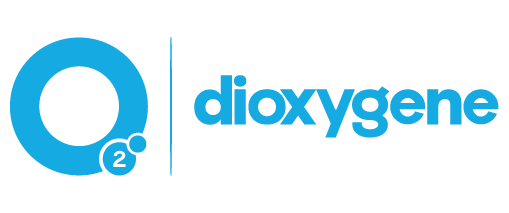The chart will update as you progress playing cards alongside in your board, so you will all the time have an correct illustration of your team’s work—without a ton of handbook work required. Analysis from LinkedIn learning states that 70% of workers determine their workloads as their biggest driver of stress at work. This is a good signal that managers must take steps to grasp bandwidth and maintain practical expectations. A burndown chart helps you spread project work out evenly—rather than everyone scrambling to recover from the end line. Let’s refer back to our example of the onboarding project and why there was such a slow begin at the beginning. It’s essential to gauge why your staff solely completed a handful of duties (instead of the ten tasks you planned for) during these first three days.
A burndown chart is a graph that represents the work left to do versus the time it takes to complete it. It can be especially useful for teams working in sprints, as it could effectively show whether your deadlines are capable of be met along the way in which. The chart’s horizontal axis shows the times within a Sprint, and the vertical axis represents the estimated remaining effort-hours. Not each organization labels the x and y-axis in the same method — there isn’t any actual terminology. All duties are handled equally in a burndown chart, which implies it is probably not clear that some tasks are the next priority or more difficult than different tasks. This can create an unclear representation of progress, as it might appear that not a lot work has been carried out, when in actuality the staff had accomplished difficult tasks during that stage.

How To Use Burndown Charts In Agile And Scrum
As a Scrum Master, you can use this in style methodology to maximize business worth while mitigating potential dangers. Her expertise in various B2B and B2C industries proceed to drive her interest in the SaaS buyer journey. Rachaelle holds a BA in Communication Research from the College of Florida. Burndown charts allow group members to see the progress of individual sprints. This allows individuals to see how their work is progressing and if the complete group is on monitor or behind schedule. Plot the X-axis to characterize the time (usually days) and the Y-axis to characterize the whole work remaining.

Teams
Empower your career with Invensis Learning’s Agile Certification programs. Purchase the talents to guide Agile initiatives effectively, enhance collaboration, and obtain project success. Their major operate is highlighting trends somewhat than making certain alignment with delivering the proper product backlog gadgets.
Your actual work line will most likely not be a wonderfully straight line as quickly as plotted in your burndown chart. It’s normal to see ebbs and flows of effort, as most initiatives run into some deviations alongside the finest way. As Soon As you have your estimated effort, you’ll find a way to begin tracking your every day progress in order to start your burndown line. Now that you understand what a burndown chart is, how do you, the project supervisor, go about creating one?
Burndown charts function highly effective visible instruments that facilitate project monitoring, promote group productiveness, and provide priceless insights for decision-making. Nonetheless, it is very important acknowledge the limitations and challenges of burndown and adapt its utilization to go properly with the needs of each project. Studying and deciphering a burndown chart is essential for understanding the progress and health of your agile project management endeavors. By analyzing the chart’s key components and the relationships between them, you can acquire valuable insights into your team’s progress and make data-driven decisions. In this part, we’ll explore the method to learn a burndown chart successfully, which is an essential skill for any scrum grasp or project supervisor.
While burndown charts are helpful, they should not be the one metric used to gauge progress. They provide a high-level view however don’t account for other elements, such as technical debt, group morale, or exterior dependencies. If the data used to trace progress is inaccurate or incomplete, the burndown chart won’t Cloud deployment present an accurate illustration of progress. At the end of every working day, update the chart to mirror how much work remains. This may be accomplished manually or through the use of Agile project administration software program like Jira, Trello, or Asana.
A burnup chart, or burn-up chart, is a diagram of full work and is sometimes used as an alternative to the burndown chart. Comparable to the burndown chart, the burnup chart exhibits time on the horizontal axis and work accomplished on the vertical axis. The major difference is that the burnup chart starts on the bottom and rises as tasks are completed (opposite to the burndown chart). A burndown chart may help agile groups monitor velocity — the amount of labor they’ll typically complete inside each sprint. The chart offers a realistic view of velocity by highlighting how much is actually getting carried out through the dash and the way rapidly it’s being accomplished.
- One Other vital advantage of utilizing burndown charts is the positive impression it has on group productivity.
- Prior to becoming a member of the staff at Forbes Advisor, Cassie was a Content Operations Manager and Copywriting Manager at Fit Small Business.
- However, sudden spikes or plateaus in the burndown line may be indicators of potential roadblocks or issues that must be addressed.
- One key facet to suppose about when analyzing a burndown chart is the pattern of the burndown line over time.
Moreover, by incorporating velocity measurements and quality metrics into the burndown analysis, teams can gain insights into their productiveness and the overall quality of their work. By contemplating these extra metrics alongside the burndown chart, teams can make extra knowledgeable choices and constantly enhance their processes. The burndown chart is a powerful tool for Agile groups burndown meaning, offering a clear and concise visible illustration of progress.
It serves as a benchmark for comparison and helps groups assess their efficiency against their preliminary expectations. If the precise burndown line constantly deviates from the ideal line, it signifies that the group needs to reevaluate their methods and make essential adjustments to stay on observe. Burndown charts help groups visualize their tasks to see what work has been accomplished and the way a lot is left to be done. They also present perception right into a team’s dash, indicating bottlenecks and problems shortly.
It tells you whether the staff is on schedule, ahead of schedule or working behind needing to get back on observe. It is easy to create and might easily be shared with stakeholders, managers and the team. One notable pattern in burndown usage is the mixing of automated instruments and real-time reporting. Leveraging know-how https://www.globalcloudteam.com/ to streamline the monitoring and monitoring processes enhances team efficiency and offers stakeholders with up-to-the-minute insights into project progress.

While burndown has its roots in Agile, its rules and advantages can be applied to any project management framework, permitting groups to enhance their monitoring and monitoring capabilities. But what makes the burndown chart really highly effective is its ability to provide a deeper understanding of the project’s trajectory. By analyzing the shape and development of the burndown line, project managers can determine patterns and anticipate potential roadblocks. For instance, if the line is persistently steeper than anticipated, it might point out that the staff is taking up more work than they will handle.

